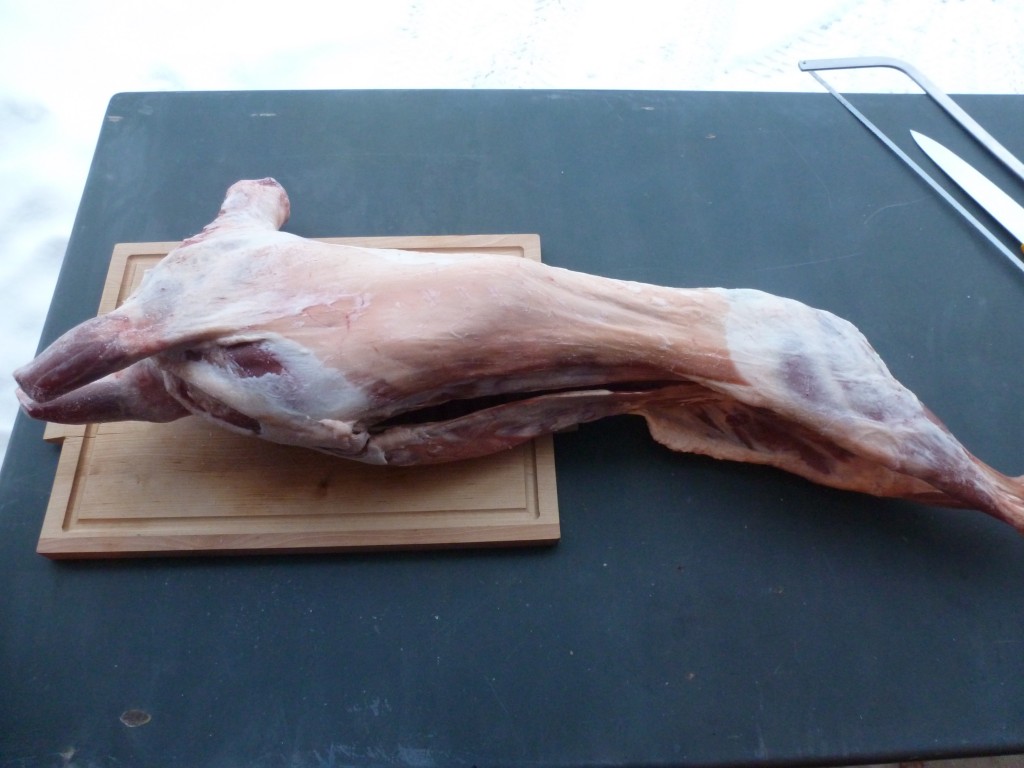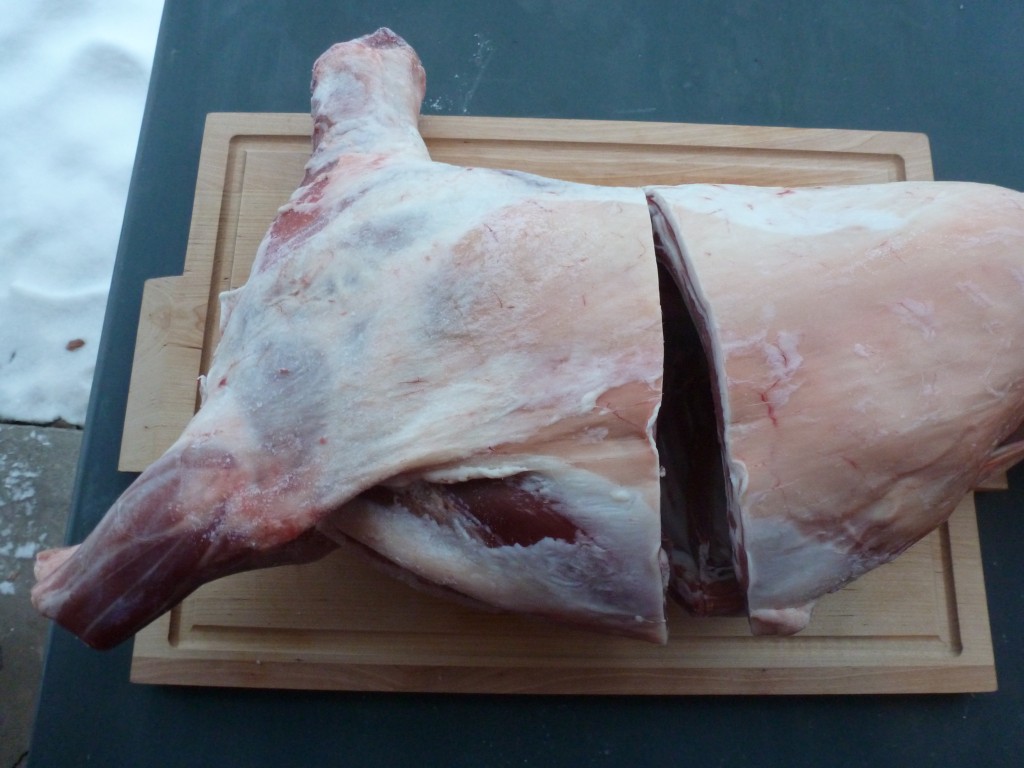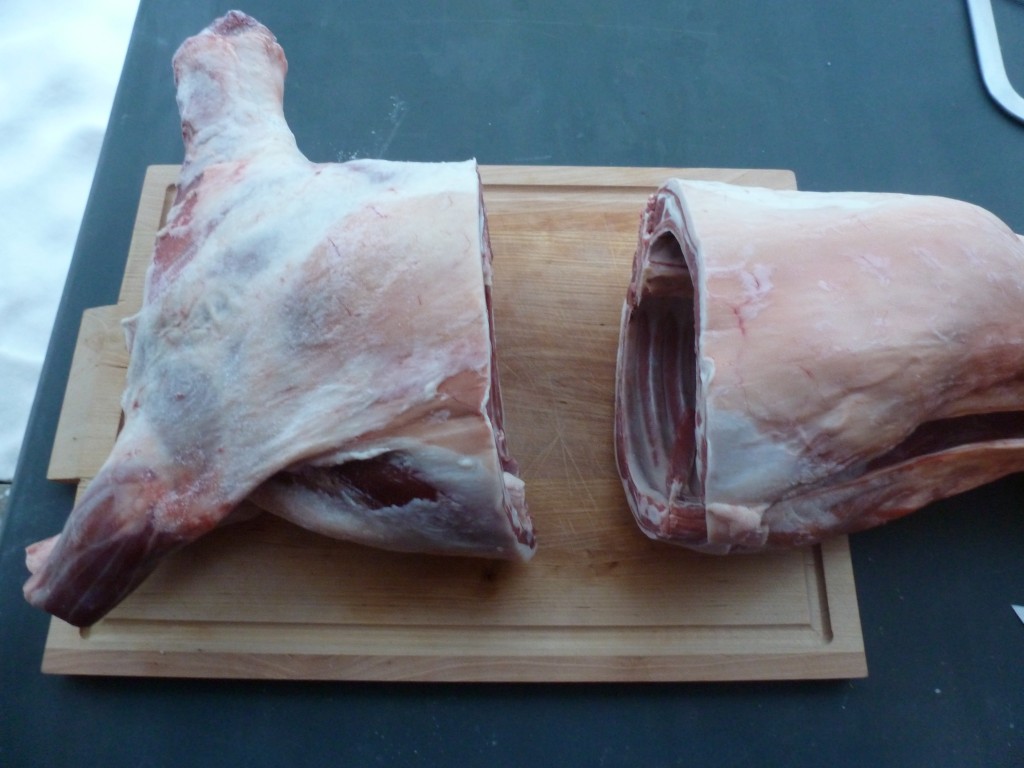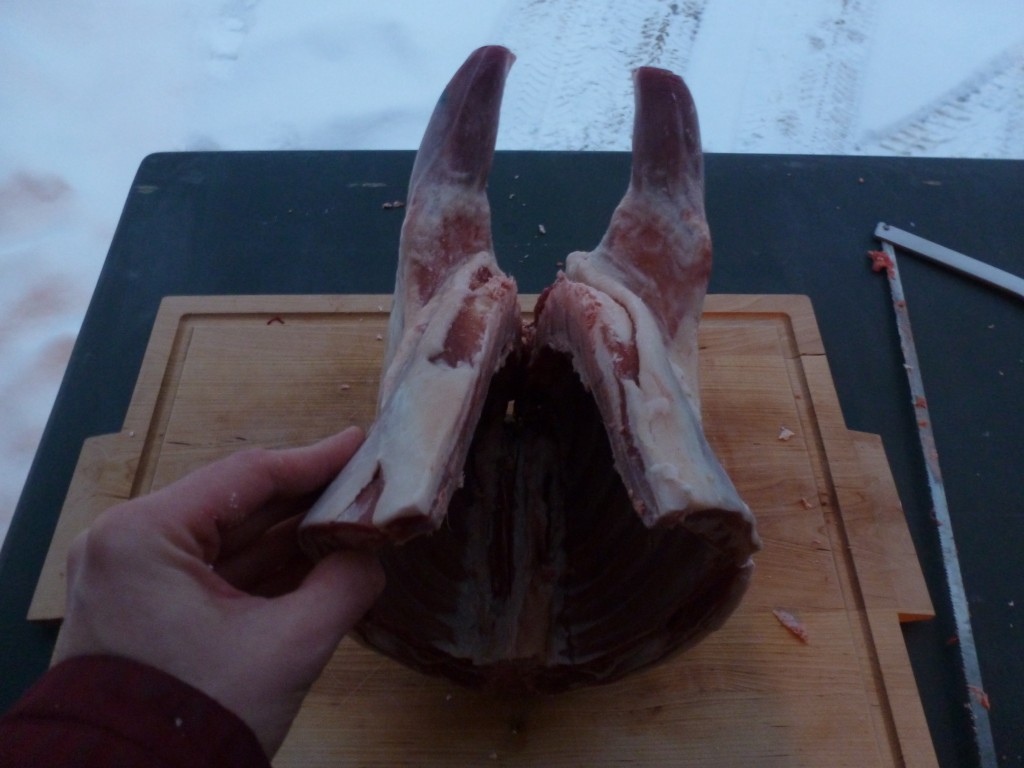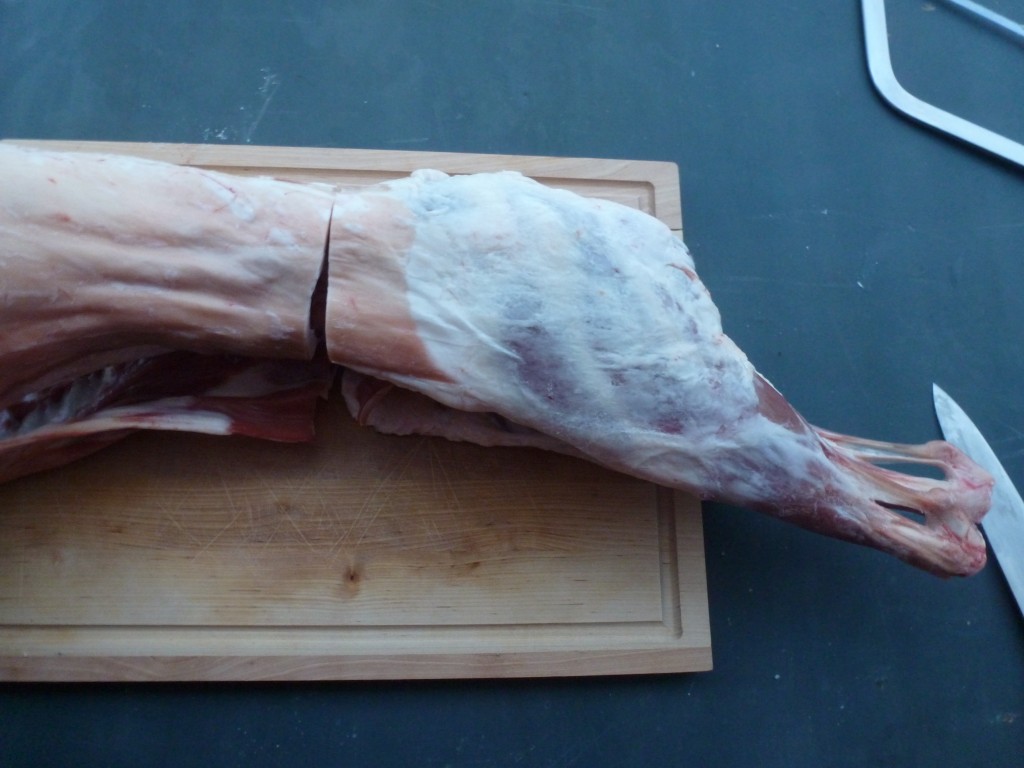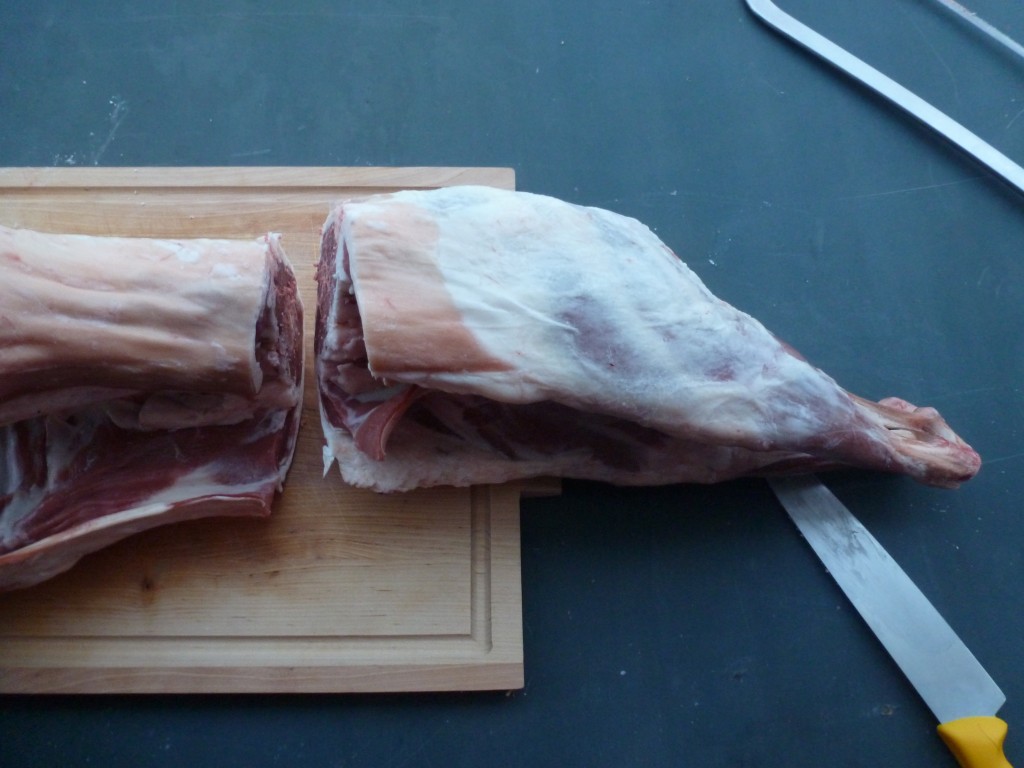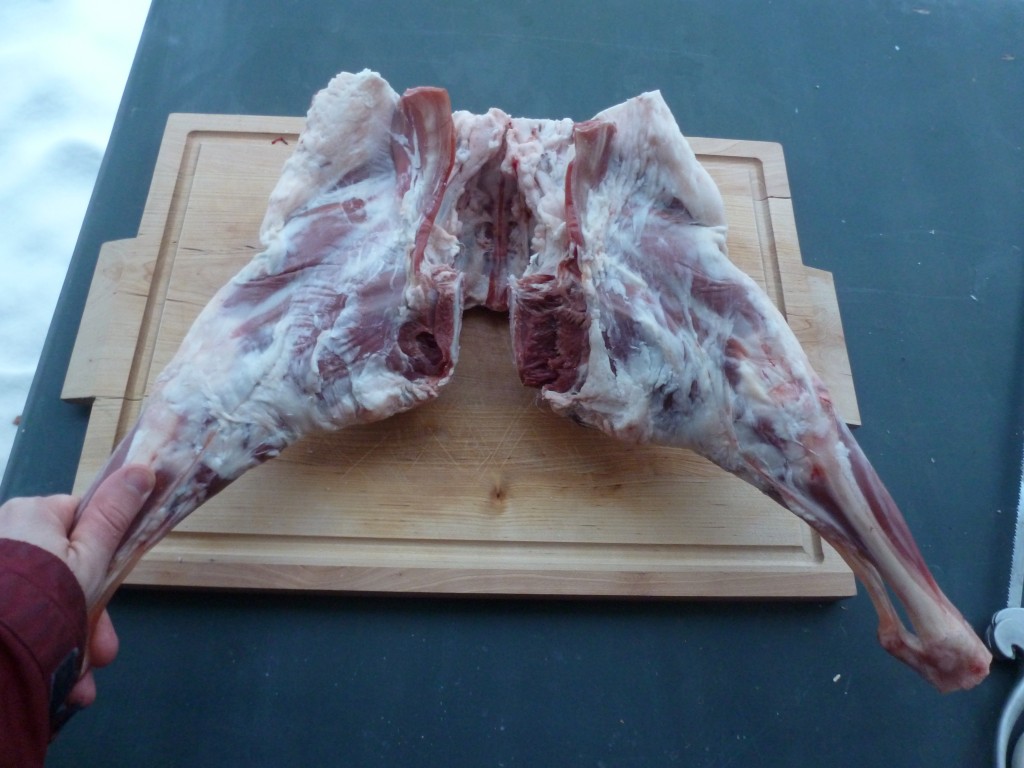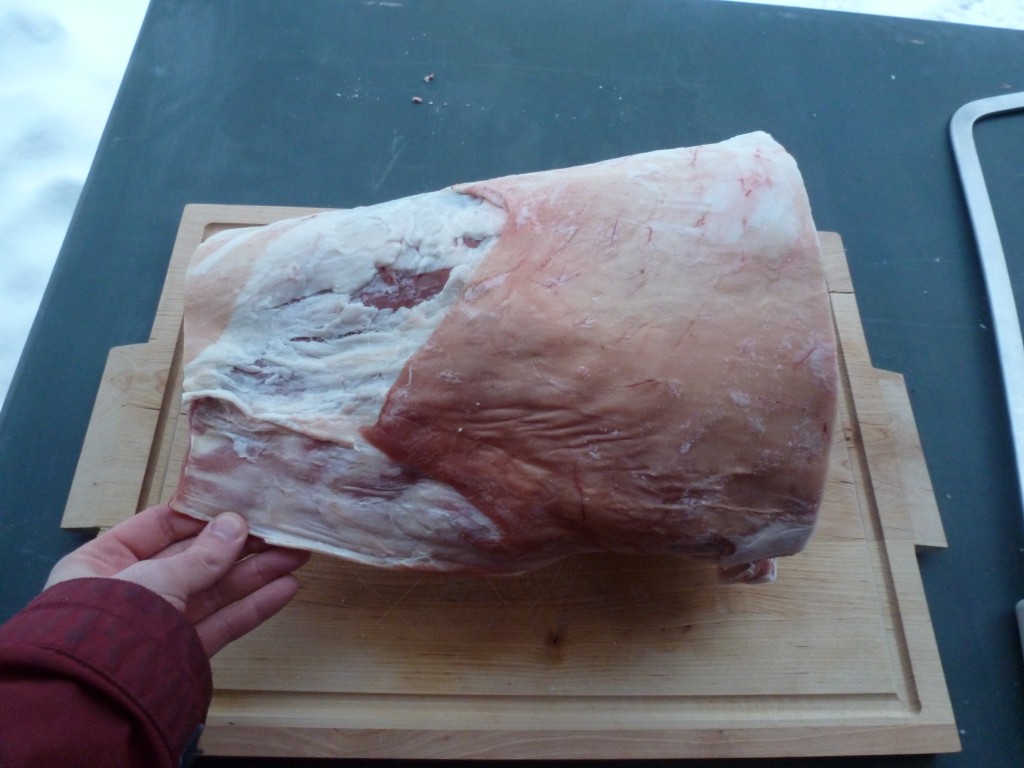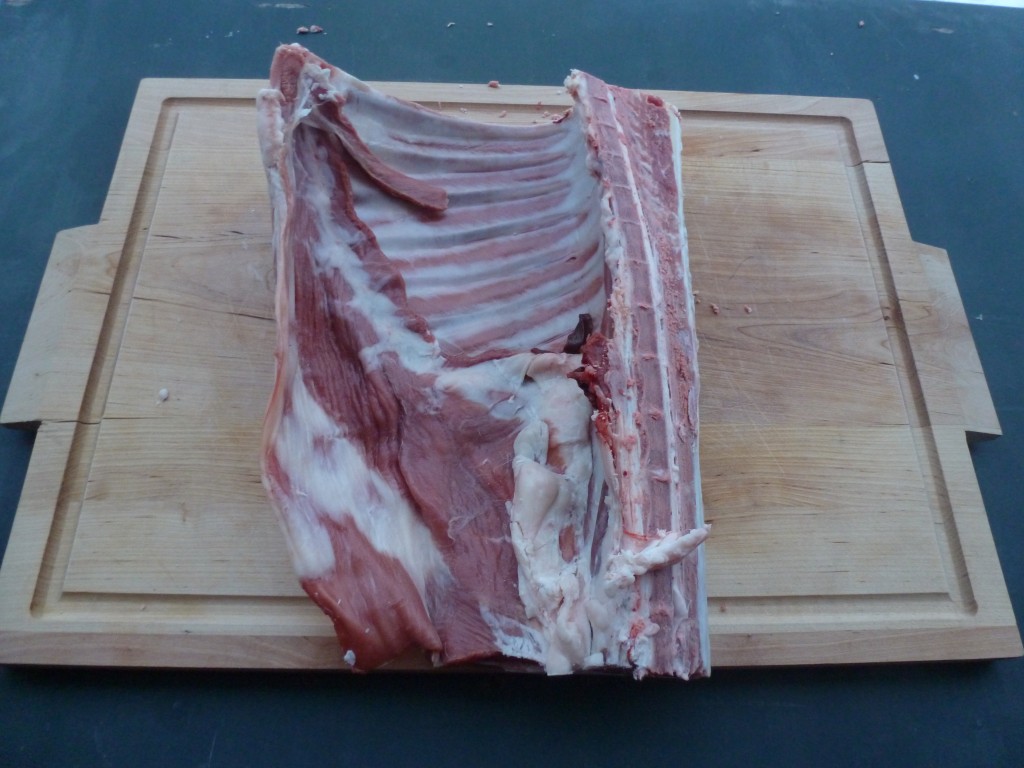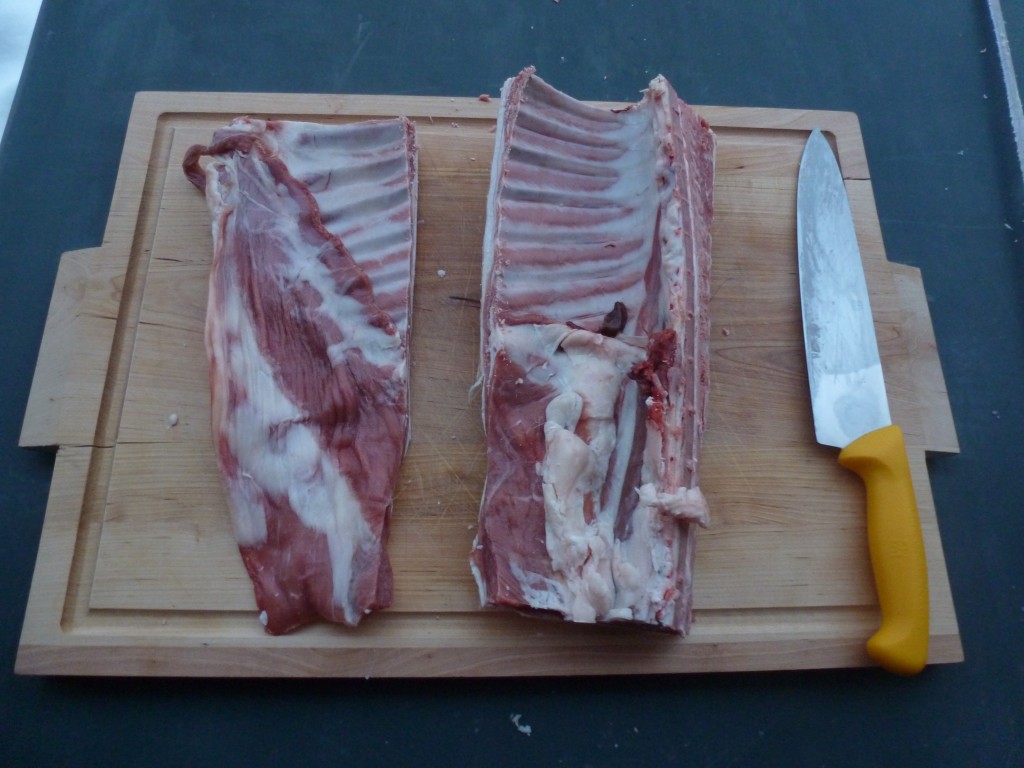This is a whole lamb from Tangle Ridge Ranch. Notice that, unlike pork and beef, the lamb has not been cut in two down the spine. The carcass is easy to handle (typically 40-60 lbs, maybe a bit smaller for grass-finished varieties like Tangle Ridge). It’s traditionally broken into four primals:
- front,
- leg,
- loin, and
- flank.
Removing the front. The first primal to be removed is the front, which is separated from the rest of the animal by cutting between the sixth and seventh ribs. You can count the ribs by putting your hand inside the cavity. Slide a knife between the sixth and seventh ribs and cut all the way up to the backbone, and all the way down to the sternum, which the knife should easily break through. Use a handsaw to cut through the backbone.
Dividing the front. Since I have my handsaw out, I usually divide the front into two halves along the spine right away. First I remove the neck, which on sheep is called the scrag.
Then turn the front over to expose the sternum, or breast, of the lamb. Use the handsaw to break through the cartilage and open up the chest cavity.
Saw along the centre of the backbone to divide the front in two.

Removing the legs. Next the legs are separated from the body. They are usually removed so that the entire pelvis and adjacent sirloin are left on the legs. There are two ways to landmark this cut. You can feel along the outside of the hip to find where the pelvis ends, or you can look within the cavity and cut between the last and second last lumbar vertebrae.
Dividing the legs. Again, since I have the saw out, I separate the two legs. Turn the legs over to expose the underside. Saw through the lower end of the pelvis.
Now pull the legs apart and saw along the centre of the back bone.
Dividing the saddle. We are now left with the middle portion of the lamb, sometimes called the saddle. At the top, on either side of the backbone, are the loins. Below them, towards the belly, are the flanks.
First we divide the saddle in two by turning it over and sawing along the centre of the backbone. Be precise, as this is where the prime cuts, the rack and chops, will come from.
Separating the loin and flank. Now we can separate the flanks from the loins. The separation point is determined by how long you want the bones on your rack of lamb to be. I make a cut parallel to the backbone four to six inches down the ribs. Break through the ribs with the hand saw, and finish the cut with your knife.
That’s it, for now. Our lamb has yielded the following:
- the two halves of the front primal,
- a scrag,
- two hing legs,
- two loins, and
- two flanks.
Future posts will describe how to trim these into the familiar ready-to-cook cuts of lamb.
